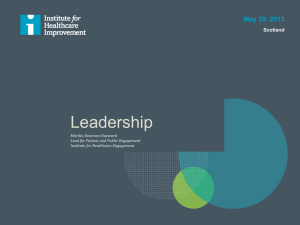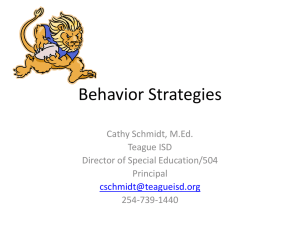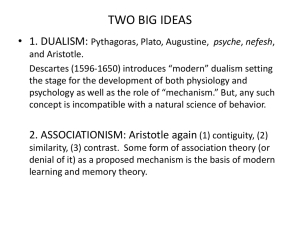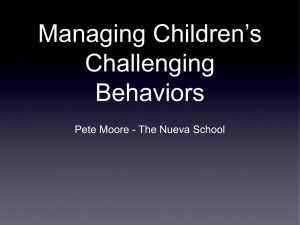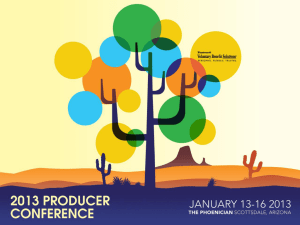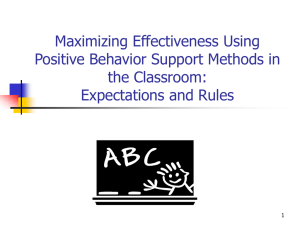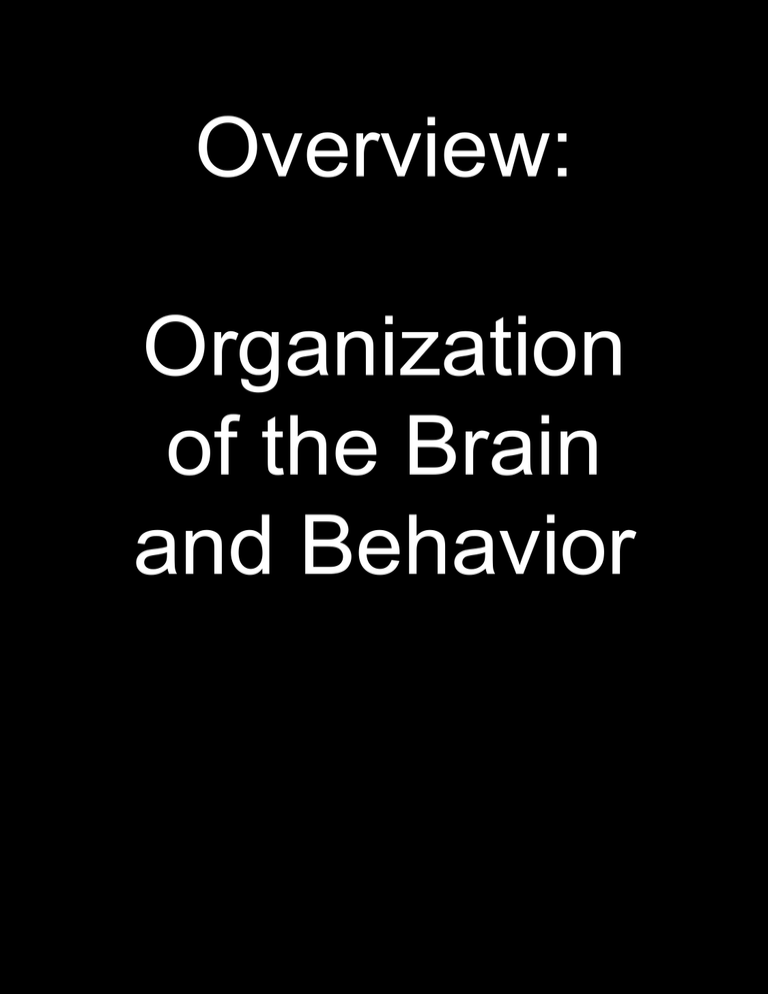
Overview:
Organization
of the Brain
and Behavior
Swanson, L.W. (2000) What is the brain?
Trends Neurosci., 23, 519-527.
Segmental Model
(Swanson, 2000)
Swanson, L.W. (2000) What is the brain?
Trends Neurosci., 23, 519-527.
Swanson, L.W. (2000) What is the brain?
Trends Neurosci., 23, 519-527.
Developmental Model
Swanson, L.W. (2000) What is the brain?
Trends Neurosci., 23, 519-527.
Evolutionary Model
Swanson, L.W. (2000) What is the brain?
Trends Neurosci., 23, 519-527.
Genomic Model
SYSTEM NERVORUM CENTRALE
(Central nervous system)
I. ENCEPHALON (brain)
A. PROSENCEPHALON (forebrain)
1. TELENCEPHALON (endbrain; limbic system, basal ganglia & cerebral cortex)
2. DIENCEPHALON (between-brain, or interbrain; hypothalamus & thalamus)
B. MESENCEPHALON (midbrain; tectum & tegmentum)
C. RHOMBENCEPHALON (hindbrain)
1. METENCEPHALON (pons & cerebellum)
2. MYELENCEPHALON (medulla oblongata)
II. MEDULLA SPINALIS (spinal cord)
Notes: "BRAINSTEM" is an imprecisely defined term which usually refers to the rhombencephalon
and mesencephalon together. It may or may not include the cerebellum, and sometimes the
diencephalon is included.
Similarly, the terms "CEREBRUM" or "CEREBRAL HEMISHPHERES" may refer to the
telencephalon or to the entire prosencephalon.
The term “BASAL GANGLIA” is also used imprecisely, sometimes including the midbrain nucleus,
substantia nigra, and sometimes including only forebrain structures.
The amygdala may be included as part of the limbic system or as part of the basal ganglia,
depending on the author.
SYSTEM NERVORUM CENTRALE
(Central nervous system)
I. ENCEPHALON (brain)
A. PROSENCEPHALON (forebrain)
1. TELENCEPHALON (endbrain; limbic system, basal ganglia & cerebral
cortex)
2. DIENCEPHALON (between-brain, or interbrain; hypothalamus &
thalamus)
B. MESENCEPHALON (midbrain; tectum & tegmentum)
C. RHOMBENCEPHALON (hindbrain)
1. METENCEPHALON (pons & cerebellum)
2. MYELENCEPHALON (medulla oblongata)
II. MEDULLA SPINALIS (spinal cord)
Notes: "BRAINSTEM" is an imprecisely defined term which usually refers to the
rhombencephalon and mesencephalon together. It may or may not include the
cerebellum, and sometimes the diencephalon is included.
Similarly, the terms "CEREBRUM" or "CEREBRAL HEMISHPHERES" may refer to
the telencephalon or to the entire prosencephalon.
The term “BASAL GANGLIA” is also used imprecisely, sometimes including the
midbrain nucleus, the substantia nigra, and sometimes including only forebrain
structures.
The amygdala may be included as part of the limbic system or as part of the basal
ganglia, depending on the author.
Hierarchical Organization
of the Brain
and Behavior
What is a hierarchy?
Ordering along a dimension
or
arrangement in a graded series
What are some examples
of hierarchies?
Behavior
Taxonomy
Anatomy and Physiology
Histology
Cytology
Molecular biology
DNA
Cellular Proteins
Cells
Cells and Tissues
Organs
Organisms
Organisms and Societies
Complexity Hierarchy
Size Hierarchy
Command
Partition Hierarchy
Command
Lattice Hierarchy
Hierarchical Control by the CNS
Hierarchical sensory processing
Hierarchical motor control
Hierarchical Control by the CNS
spinal cord-basic sensory reception, integration, motor command
e.g. withdrawal reflex
reflex arcs, central pattern generators
brainstem-cranial reflexes, central pattern generators (respiration,
mastication, etc)
command systems
primitive responses (orienting, posture, eye movements, etc)
background pattern for more differentiated responses
(“arousal”)
primitive defensive reactions
autonomic responses
subcortical forebrain-thalamus -- crude discriminations, e.g. light-dark, pain
directs retic. arousal to specific modalities (attention)
limbic system -- gives rise to specific emotional states
hypothalamus -- responsive to internal chemistry
(homeostasis, hormonal regulation)
cortex-finest sensory discrimination, motor coordination
highest integrative activity
cognition, curiosity, consciousness
Amphioxus
Encephalization
From Wikipedia (it MUST be true!):
Encephalization is defined as the amount of
brain mass exceeding that related to an
animal's total body mass. Quantifying an
animal's encephalization has been argued to
be directly related to that animal's level of
intelligence. Aristotle wrote in 335 B.C. "Of
all the animals, man has the brain largest in
proportion to his size."[1] Also, in 1871,
Charles Darwin wrote in his book The
Descent of Man: "No one, I presume, doubts
that the large proportion which the size of
man's brain bears to his body, compared to
the same proportion in the gorilla or orang, is
closely connected with his mental powers."[2]
“Ontogeny recapitulates phylogeny”
means that
the evolutionary history of an
organism (its phylogeny) is
recapitulated (repeated) in its
ontogenetic (lifespan) development.
In ontogeny, “encephalization” means
a relative increase in the importance
of progressively more rostral
structures of the brain.
We will critically examine these
notions as the course progresses.
Organization of
Behavior
Behavior
Also Can be Organized
Hierarchically
Reflexes
Rhythmic Behaviors
Kineses
Taxes
Species-typical (“instinctive”) behaviors
Motivated (operant) behaviors
Latent learning
Behavior
Also Can be Organized
Hierarchically
Reflexes
predictable, stereotyped responses
to specific stimuli
• usually localized
• involuntary
• involve relatively few neurons
• graded responses
• degree of voluntary control over
reflex varies
Behavior
Also Can be Organized
Hierarchically
Reflexes
Micturition reflex is well-controlled
• "to pee or not to pee"
• elicited by distention of bladder
• bladder contraction and internal sphincter
relaxation
spinal control
• external sphincter relaxation
brainstem control
• external sphincter relaxation under
cortical inhibitory control
• eventually, however, control must give
way
Pupillary reflexes are generally not subject
to significant voluntary control
Behavior
Also Can be Organized
Hierarchically
Reflexes
Rhythmic Behaviors
basis of rhythmic behaviors are
Central Pattern Generators (CPGs)
• in brainstem and spinal cord
• mechanisms that can operate without
any sensory input
• run a sequence of movements, like
computer programs
• input may be necessary to initiate them
• underlie activities as diverse as
chewing, breathing, locomotion, and
copulation, even music and speech
• long thought to be reflex activities
• reflexes act as modifiers via feedback
control
Behavior
Also Can be Organized
Hierarchically
Reflexes
Rhythmic Behaviors
Kineses
•change in rate of movement
•simple change in rate of rhythm (CPG)
•may be + (increase in rate) or
– (decrease in rate)
•named according to evoking
stimulus
• e.g. + photokinesis, – thermokinesis
•general to the species
•serve to maximize time in good
environment,
•minimize time in bad environment
•often incorrectly inferred to reflect higherorder processes
Behavior
Also Can be Organized
Hierarchically
Reflexes
Rhythmic Behaviors
Kineses
Taxes
•movement oriented to a stimulus
•may be + (approach) or – (withdraw)
•named according to mechanism, type of
stimulus
•klinotaxis
• single receptor integrating over time
•tropotaxis
• paired receptors--simultaneous comparisons
•telotaxis
• orientation toward a goal
• not necessarily stimulus strength
• e.g. swim to shore
Behavior
Also Can be Organized
Hierarchically
Reflexes
Rhythmic Behaviors
Kineses
Taxes
Species-typical (“instinctive”) behaviors
•a.k.a. fixed action patterns
•relatively complex behaviors common to
members of a species
•require minimal learning at most
•usually referred to as innate or
instinctive
Behavior
Also Can be Organized
Hierarchically
Reflexes
Rhythmic Behaviors
Kineses
Taxes
Species-typical (“instinctive”) behaviors
Motivated (operant) behaviors
•goal directed
•elicited by physiologically meaningful
stimulus
•signals food, sex, water, threat, etc.
•terminated by consummatory response
•
eat, drink, fight, flee, copulate
•appetitive—approach, aversive-- withdraw
Behavior
Also Can be Organized
Hierarchically
Reflexes
Rhythmic Behaviors
Kineses
Taxes
Species-typical (instinctive) behaviors
Motivated (operant) behaviors
Latent learning (learning without a US)
•by observation (modeling, imitation)
•by performing without reward
•by exposure
Behavior
Also Can be Organized
Hierarchically
Reflexes
Rhythmic Behaviors
Kineses
Taxes
Species-typical (“instinctive”) behaviors
Motivated (operant) behaviors
Latent learning


